Refine search
No keyword found to refine search
keywords EN
Places
Names
89 documents found
| 1 | 2 |
Documents per page :

El Niño phenomenon on the north coast of Peru
Nicolas Réméné / Le Pictorium
LePictorium_0281154.jpg
Sea turtles at Los Órganos in the Talara region, on the northwest coast of Peru, on October 21, 2018. These already vulnerable turtles represent an endangered species because they are sensitive to threats linked to human activities and certain natural phenomena such as El Nino. Los Órganos is one of the fishing villages affected by the El Nino phenomenon.. ---------------------------------------- El Nino phenomenon on the north coast of Peru North of Lima in Peru and along almost 1300 km of coastline, many villages are periodically subjected to the climatic phenomena known as El Niño and La Niña. La Niña occurs more often, but is much less severe. As for El Niño, it recurs every 3 to 7 years. It is the result of disruptions to the oceanic and climatic system in the equatorial Pacific, particularly around the Peruvian and Ecuadorian coasts of South America. This phenomenon, which has a major influence on the world's climate, results in a surge of warm water in the Pacific Ocean and a rise in water levels that can lead to torrential rain, major flooding and landslides. These extreme weather events have had dramatic consequences for many of the villages along the coast. Many of these villages are fishing villages, where small-scale fishing is an essential part of the local economy, but El Niño has tended to warm surface waters, resulting in a reduction in plankton and therefore fish, turning the whole food chain upside down. Over the last few decades, the El Niño phenomenon has reappeared several times, affecting ecosystems that are already particularly vulnerable to climate change, and causing a massive migration of people from this coastal area of Peru who are subject to the vagaries of the climate. In addition to the large number of migrants c

El Niño phenomenon on the north coast of Peru
Nicolas Réméné / Le Pictorium
LePictorium_0281155.jpg
Sea turtles at Los Órganos in the Talara region, on the northwest coast of Peru, on October 21, 2018. These already vulnerable turtles represent an endangered species because they are sensitive to threats linked to human activities and certain natural phenomena such as El Nino. Los Órganos is one of the fishing villages affected by the El Nino phenomenon.. ---------------------------------------- El Nino phenomenon on the north coast of Peru North of Lima in Peru and along almost 1300 km of coastline, many villages are periodically subjected to the climatic phenomena known as El Niño and La Niña. La Niña occurs more often, but is much less severe. As for El Niño, it recurs every 3 to 7 years. It is the result of disruptions to the oceanic and climatic system in the equatorial Pacific, particularly around the Peruvian and Ecuadorian coasts of South America. This phenomenon, which has a major influence on the world's climate, results in a surge of warm water in the Pacific Ocean and a rise in water levels that can lead to torrential rain, major flooding and landslides. These extreme weather events have had dramatic consequences for many of the villages along the coast. Many of these villages are fishing villages, where small-scale fishing is an essential part of the local economy, but El Niño has tended to warm surface waters, resulting in a reduction in plankton and therefore fish, turning the whole food chain upside down. Over the last few decades, the El Niño phenomenon has reappeared several times, affecting ecosystems that are already particularly vulnerable to climate change, and causing a massive migration of people from this coastal area of Peru who are subject to the vagaries of the climate. In addition to the large number of migrants c

El Niño phenomenon on the north coast of Peru
Nicolas Réméné / Le Pictorium
LePictorium_0281156.jpg
Sea turtles at Los Órganos in the Talara region, on the northwest coast of Peru, on October 21, 2018. These already vulnerable turtles represent an endangered species because they are sensitive to threats linked to human activities and certain natural phenomena such as El Nino. Los Órganos is one of the fishing villages affected by the El Nino phenomenon.. ---------------------------------------- El Nino phenomenon on the north coast of Peru North of Lima in Peru and along almost 1300 km of coastline, many villages are periodically subjected to the climatic phenomena known as El Niño and La Niña. La Niña occurs more often, but is much less severe. As for El Niño, it recurs every 3 to 7 years. It is the result of disruptions to the oceanic and climatic system in the equatorial Pacific, particularly around the Peruvian and Ecuadorian coasts of South America. This phenomenon, which has a major influence on the world's climate, results in a surge of warm water in the Pacific Ocean and a rise in water levels that can lead to torrential rain, major flooding and landslides. These extreme weather events have had dramatic consequences for many of the villages along the coast. Many of these villages are fishing villages, where small-scale fishing is an essential part of the local economy, but El Niño has tended to warm surface waters, resulting in a reduction in plankton and therefore fish, turning the whole food chain upside down. Over the last few decades, the El Niño phenomenon has reappeared several times, affecting ecosystems that are already particularly vulnerable to climate change, and causing a massive migration of people from this coastal area of Peru who are subject to the vagaries of the climate. In addition to the large number of migrants c

El Niño phenomenon on the north coast of Peru
Nicolas Réméné / Le Pictorium
LePictorium_0281157.jpg
Sea turtles at Los Órganos in the Talara region, on the northwest coast of Peru, on October 21, 2018. These already vulnerable turtles represent an endangered species because they are sensitive to threats linked to human activities and certain natural phenomena such as El Nino. Los Órganos is one of the fishing villages affected by the El Nino phenomenon.. ---------------------------------------- El Nino phenomenon on the north coast of Peru North of Lima in Peru and along almost 1300 km of coastline, many villages are periodically subjected to the climatic phenomena known as El Niño and La Niña. La Niña occurs more often, but is much less severe. As for El Niño, it recurs every 3 to 7 years. It is the result of disruptions to the oceanic and climatic system in the equatorial Pacific, particularly around the Peruvian and Ecuadorian coasts of South America. This phenomenon, which has a major influence on the world's climate, results in a surge of warm water in the Pacific Ocean and a rise in water levels that can lead to torrential rain, major flooding and landslides. These extreme weather events have had dramatic consequences for many of the villages along the coast. Many of these villages are fishing villages, where small-scale fishing is an essential part of the local economy, but El Niño has tended to warm surface waters, resulting in a reduction in plankton and therefore fish, turning the whole food chain upside down. Over the last few decades, the El Niño phenomenon has reappeared several times, affecting ecosystems that are already particularly vulnerable to climate change, and causing a massive migration of people from this coastal area of Peru who are subject to the vagaries of the climate. In addition to the large number of migrants c

El Niño phenomenon on the north coast of Peru
Nicolas Réméné / Le Pictorium
LePictorium_0281158.jpg
A fisherman in Los Órganos in the Talara region, on the northwest coast of Peru, on 21 October 2018. Los Órganos is one of the fishing villages affected by the El Niño phenomenon.. ---------------------------------------- El Nino phenomenon on the north coast of Peru North of Lima in Peru and along almost 1300 km of coastline, many villages are periodically subjected to the climatic phenomena known as El Niño and La Niña. La Niña occurs more often, but is much less severe. As for El Niño, it recurs every 3 to 7 years. It is the result of disruptions to the oceanic and climatic system in the equatorial Pacific, particularly around the Peruvian and Ecuadorian coasts of South America. This phenomenon, which has a major influence on the world's climate, results in a surge of warm water in the Pacific Ocean and a rise in water levels that can lead to torrential rain, major flooding and landslides. These extreme weather events have had dramatic consequences for many of the villages along the coast. Many of these villages are fishing villages, where small-scale fishing is an essential part of the local economy, but El Niño has tended to warm surface waters, resulting in a reduction in plankton and therefore fish, turning the whole food chain upside down. Over the last few decades, the El Niño phenomenon has reappeared several times, affecting ecosystems that are already particularly vulnerable to climate change, and causing a massive migration of people from this coastal area of Peru who are subject to the vagaries of the climate. In addition to the large number of migrants c

El Niño phenomenon on the north coast of Peru
Nicolas Réméné / Le Pictorium
LePictorium_0281159.jpg
Fishing boats in Los Órganos in the Talara region, on Peru's northwest coast, on October 21, 2018. Los Órganos is one of the fishing villages affected by the El Niño phenomenon.. ---------------------------------------- El Nino phenomenon on the north coast of Peru North of Lima in Peru and along almost 1300 km of coastline, many villages are periodically subjected to the climatic phenomena known as El Niño and La Niña. La Niña occurs more often, but is much less severe. As for El Niño, it recurs every 3 to 7 years. It is the result of disruptions to the oceanic and climatic system in the equatorial Pacific, particularly around the Peruvian and Ecuadorian coasts of South America. This phenomenon, which has a major influence on the world's climate, results in a surge of warm water in the Pacific Ocean and a rise in water levels that can lead to torrential rain, major flooding and landslides. These extreme weather events have had dramatic consequences for many of the villages along the coast. Many of these villages are fishing villages, where small-scale fishing is an essential part of the local economy, but El Niño has tended to warm surface waters, resulting in a reduction in plankton and therefore fish, turning the whole food chain upside down. Over the last few decades, the El Niño phenomenon has reappeared several times, affecting ecosystems that are already particularly vulnerable to climate change, and causing a massive migration of people from this coastal area of Peru who are subject to the vagaries of the climate. In addition to the large number of migrants c

El Niño phenomenon on the north coast of Peru
Nicolas Réméné / Le Pictorium
LePictorium_0281160.jpg
An old oil rig transformed into a marine platform and a biodiversity sanctuary in Los Órganos in the Talara region, on Peru's north-west coast, on 21 October 2018. Los Órganos is one of the fishing villages affected by the El Nino phenomenon. ---------------------------------------- El Nino phenomenon on the north coast of Peru North of Lima in Peru and along almost 1300 km of coastline, many villages are periodically subjected to the climatic phenomena known as El Niño and La Niña. La Niña occurs more often, but is much less severe. As for El Niño, it recurs every 3 to 7 years. It is the result of disruptions to the oceanic and climatic system in the equatorial Pacific, particularly around the Peruvian and Ecuadorian coasts of South America. This phenomenon, which has a major influence on the world's climate, results in a surge of warm water in the Pacific Ocean and a rise in water levels that can lead to torrential rain, major flooding and landslides. These extreme weather events have had dramatic consequences for many of the villages along the coast. Many of these villages are fishing villages, where small-scale fishing is an essential part of the local economy, but El Niño has tended to warm surface waters, resulting in a reduction in plankton and therefore fish, turning the whole food chain upside down. Over the last few decades, the El Niño phenomenon has reappeared several times, affecting ecosystems that are already particularly vulnerable to climate change, and causing a massive migration of people from this coastal area of Peru who are subject to the vagaries of the climate. In addition to the large number of migrants c

El Niño phenomenon on the north coast of Peru
Nicolas Réméné / Le Pictorium
LePictorium_0281170.jpg
Sea turtles at Los Órganos in the Talara region, on the northwest coast of Peru, on October 21, 2018. These already vulnerable turtles represent an endangered species because they are sensitive to threats linked to human activities and certain natural phenomena such as El Nino. Los Órganos is one of the fishing villages affected by the El Nino phenomenon.. ---------------------------------------- El Nino phenomenon on the north coast of Peru North of Lima in Peru and along almost 1300 km of coastline, many villages are periodically subjected to the climatic phenomena known as El Niño and La Niña. La Niña occurs more often, but is much less severe. As for El Niño, it recurs every 3 to 7 years. It is the result of disruptions to the oceanic and climatic system in the equatorial Pacific, particularly around the Peruvian and Ecuadorian coasts of South America. This phenomenon, which has a major influence on the world's climate, results in a surge of warm water in the Pacific Ocean and a rise in water levels that can lead to torrential rain, major flooding and landslides. These extreme weather events have had dramatic consequences for many of the villages along the coast. Many of these villages are fishing villages, where small-scale fishing is an essential part of the local economy, but El Niño has tended to warm surface waters, resulting in a reduction in plankton and therefore fish, turning the whole food chain upside down. Over the last few decades, the El Niño phenomenon has reappeared several times, affecting ecosystems that are already particularly vulnerable to climate change, and causing a massive migration of people from this coastal area of Peru who are subject to the vagaries of the climate. In addition to the large number of migrants c
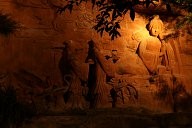
Trip to China.
Jean-Paul Lozouet / Le Pictorium
LePictorium_0179952.jpg
Emeishan, Sichuan, China, entrance to Mount Emei Shrine.

Original Christian holy place of the cave of the Seven Sleepers
Manoël Pénicaud / Le Pictorium
LePictorium_0169801.jpg
Known in Islam as the People of the Cave
(Ahl al-Kahf in Arabic), the Seven Sleepers are said to have miraculously slept for several centuries in a cave in order to escape from the persecutions of the Roman Empire. Their awakening is a metaphor for the resurrection
of the body, in both Christianity and in Islam
(Qur’anic sura ‘The Cave’). The narratives
of the Seven Sleepers were widely disseminated. Numerous caves in the Mediterranean region are considered to be sacred places where this miracle occurred. This legend has sometimes given rise to joint veneration by Christians and Muslims.
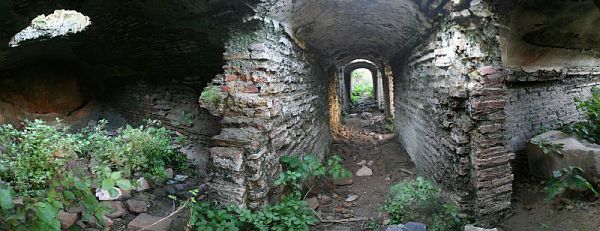
Crypt of the Seven Sleepers in Ephesus
Manoël Pénicaud / Le Pictorium
LePictorium_0169802.jpg
Known in Islam as the People of the Cave
(Ahl al-Kahf in Arabic), the Seven Sleepers are said to have miraculously slept for several centuries in a cave in order to escape from the persecutions of the Roman Empire. Their awakening is a metaphor for the resurrection
of the body, in both Christianity and in Islam
(Qur’anic sura ‘The Cave’). The narratives
of the Seven Sleepers were widely disseminated. Numerous caves in the Mediterranean region are considered to be sacred places where this miracle occurred. This legend has sometimes given rise to joint veneration by Christians and Muslims.
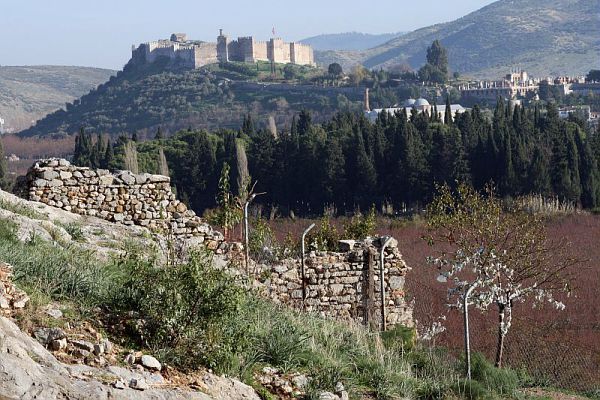
Citadel of Saint John, from the 7 Dormants site, with a wishing tree
Manoël Pénicaud / Le Pictorium
LePictorium_0169803.jpg
Known in Islam as the People of the Cave
(Ahl al-Kahf in Arabic), the Seven Sleepers are said to have miraculously slept for several centuries in a cave in order to escape from the persecutions of the Roman Empire. Their awakening is a metaphor for the resurrection
of the body, in both Christianity and in Islam
(Qur’anic sura ‘The Cave’). The narratives
of the Seven Sleepers were widely disseminated. Numerous caves in the Mediterranean region are considered to be sacred places where this miracle occurred. This legend has sometimes given rise to joint veneration by Christians and Muslims.

Sanctuary of the 7 Sleepers in Tarsus
Manoël Pénicaud / Le Pictorium
LePictorium_0169804.jpg
Known in Islam as the People of the Cave
(Ahl al-Kahf in Arabic), the Seven Sleepers are said to have miraculously slept for several centuries in a cave in order to escape from the persecutions of the Roman Empire. Their awakening is a metaphor for the resurrection
of the body, in both Christianity and in Islam
(Qur’anic sura ‘The Cave’). The narratives
of the Seven Sleepers were widely disseminated. Numerous caves in the Mediterranean region are considered to be sacred places where this miracle occurred. This legend has sometimes given rise to joint veneration by Christians and Muslims.
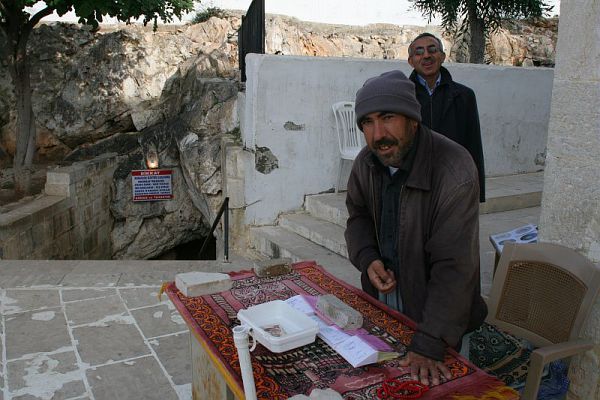
The guardian and the imam of the sanctuary. The second recognizes the Christian past in the history of the Seven Sleepers.
Manoël Pénicaud / Le Pictorium
LePictorium_0169805.jpg
Known in Islam as the People of the Cave
(Ahl al-Kahf in Arabic), the Seven Sleepers are said to have miraculously slept for several centuries in a cave in order to escape from the persecutions of the Roman Empire. Their awakening is a metaphor for the resurrection
of the body, in both Christianity and in Islam
(Qur’anic sura ‘The Cave’). The narratives
of the Seven Sleepers were widely disseminated. Numerous caves in the Mediterranean region are considered to be sacred places where this miracle occurred. This legend has sometimes given rise to joint veneration by Christians and Muslims.

Pilgrims in the Cave of the 7 Dormants
Manoël Pénicaud / Le Pictorium
LePictorium_0169806.jpg
The site is very popular and frequented. For the pilgrims, this is the true place of the miracle.
Known in Islam as the People of the Cave (Ahl al-Kahf in Arabic), the Seven Sleepers are said to have miraculously slept for several centuries in a cave in order to escape from the persecutions of the Roman Empire. Their awakening is a metaphor for the resurrection of the body, in both Christianity and in Islam (Qur’anic sura ‘The Cave’). The narratives of the Seven Sleepers were widely disseminated. Numerous caves in the Mediterranean region are considered to be sacred places where this miracle occurred. This legend has sometimes given rise to joint veneration by Christians and Muslims.
Known in Islam as the People of the Cave (Ahl al-Kahf in Arabic), the Seven Sleepers are said to have miraculously slept for several centuries in a cave in order to escape from the persecutions of the Roman Empire. Their awakening is a metaphor for the resurrection of the body, in both Christianity and in Islam (Qur’anic sura ‘The Cave’). The narratives of the Seven Sleepers were widely disseminated. Numerous caves in the Mediterranean region are considered to be sacred places where this miracle occurred. This legend has sometimes given rise to joint veneration by Christians and Muslims.

The pilgrims aim at receiving drops of water that pear from the ceiling of the cave
Manoël Pénicaud / Le Pictorium
LePictorium_0169807.jpg
Known in Islam as the People of the Cave
(Ahl al-Kahf in Arabic), the Seven Sleepers are said to have miraculously slept for several centuries in a cave in order to escape from the persecutions of the Roman Empire. Their awakening is a metaphor for the resurrection
of the body, in both Christianity and in Islam
(Qur’anic sura ‘The Cave’). The narratives
of the Seven Sleepers were widely disseminated. Numerous caves in the Mediterranean region are considered to be sacred places where this miracle occurred. This legend has sometimes given rise to joint veneration by Christians and Muslims.

The pilgrims aim at receiving drops of water that pear from the ceiling of the cave
Manoël Pénicaud / Le Pictorium
LePictorium_0169808.jpg
Known in Islam as the People of the Cave
(Ahl al-Kahf in Arabic), the Seven Sleepers are said to have miraculously slept for several centuries in a cave in order to escape from the persecutions of the Roman Empire. Their awakening is a metaphor for the resurrection
of the body, in both Christianity and in Islam
(Qur’anic sura ‘The Cave’). The narratives
of the Seven Sleepers were widely disseminated. Numerous caves in the Mediterranean region are considered to be sacred places where this miracle occurred. This legend has sometimes given rise to joint veneration by Christians and Muslims.

Door of the minaret of the sanctuary. Eshab i-Kehf means the "Companions of the Cave" to designate the Seven Sleepers
Manoël Pénicaud / Le Pictorium
LePictorium_0169809.jpg
Known in Islam as the People of the Cave
(Ahl al-Kahf in Arabic), the Seven Sleepers are said to have miraculously slept for several centuries in a cave in order to escape from the persecutions of the Roman Empire. Their awakening is a metaphor for the resurrection
of the body, in both Christianity and in Islam
(Qur’anic sura ‘The Cave’). The narratives
of the Seven Sleepers were widely disseminated. Numerous caves in the Mediterranean region are considered to be sacred places where this miracle occurred. This legend has sometimes given rise to joint veneration by Christians and Muslims.

Bus (Dolmush) to go the sanctuary
Manoël Pénicaud / Le Pictorium
LePictorium_0169810.jpg
Known in Islam as the People of the Cave
(Ahl al-Kahf in Arabic), the Seven Sleepers are said to have miraculously slept for several centuries in a cave in order to escape from the persecutions of the Roman Empire. Their awakening is a metaphor for the resurrection
of the body, in both Christianity and in Islam
(Qur’anic sura ‘The Cave’). The narratives
of the Seven Sleepers were widely disseminated. Numerous caves in the Mediterranean region are considered to be sacred places where this miracle occurred. This legend has sometimes given rise to joint veneration by Christians and Muslims.
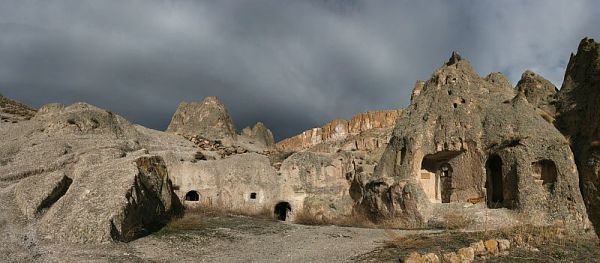
Rock church of Santa Barbara (Tahtali) with a fresco representing three of the Seven Sleepers
Manoël Pénicaud / Le Pictorium
LePictorium_0169811.jpg
Known in Islam as the People of the Cave
(Ahl al-Kahf in Arabic), the Seven Sleepers are said to have miraculously slept for several centuries in a cave in order to escape from the persecutions of the Roman Empire. Their awakening is a metaphor for the resurrection
of the body, in both Christianity and in Islam
(Qur’anic sura ‘The Cave’). The narratives
of the Seven Sleepers were widely disseminated. Numerous caves in the Mediterranean region are considered to be sacred places where this miracle occurred. This legend has sometimes given rise to joint veneration by Christians and Muslims.
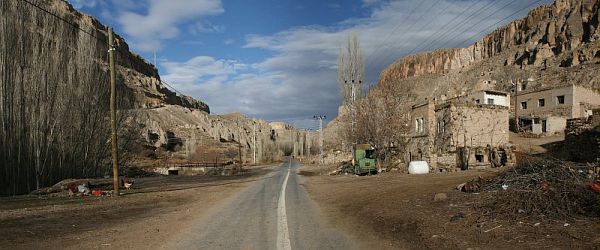
A Cappadocian Road, Soganli Valley
Manoël Pénicaud / Le Pictorium
LePictorium_0169812.jpg
Known in Islam as the People of the Cave
(Ahl al-Kahf in Arabic), the Seven Sleepers are said to have miraculously slept for several centuries in a cave in order to escape from the persecutions of the Roman Empire. Their awakening is a metaphor for the resurrection
of the body, in both Christianity and in Islam
(Qur’anic sura ‘The Cave’). The narratives
of the Seven Sleepers were widely disseminated. Numerous caves in the Mediterranean region are considered to be sacred places where this miracle occurred. This legend has sometimes given rise to joint veneration by Christians and Muslims.

Soganli Valley and the Church of Santa Barbara (Tahtali)
Manoël Pénicaud / Le Pictorium
LePictorium_0169813.jpg
Known in Islam as the People of the Cave
(Ahl al-Kahf in Arabic), the Seven Sleepers are said to have miraculously slept for several centuries in a cave in order to escape from the persecutions of the Roman Empire. Their awakening is a metaphor for the resurrection
of the body, in both Christianity and in Islam
(Qur’anic sura ‘The Cave’). The narratives
of the Seven Sleepers were widely disseminated. Numerous caves in the Mediterranean region are considered to be sacred places where this miracle occurred. This legend has sometimes given rise to joint veneration by Christians and Muslims.

Church of St. Barbara with a fresco depicting three of the Seven Sleepers and the Nativity scene
Manoël Pénicaud / Le Pictorium
LePictorium_0169814.jpg
Known in Islam as the People of the Cave
(Ahl al-Kahf in Arabic), the Seven Sleepers are said to have miraculously slept for several centuries in a cave in order to escape from the persecutions of the Roman Empire. Their awakening is a metaphor for the resurrection
of the body, in both Christianity and in Islam
(Qur’anic sura ‘The Cave’). The narratives
of the Seven Sleepers were widely disseminated. Numerous caves in the Mediterranean region are considered to be sacred places where this miracle occurred. This legend has sometimes given rise to joint veneration by Christians and Muslims.
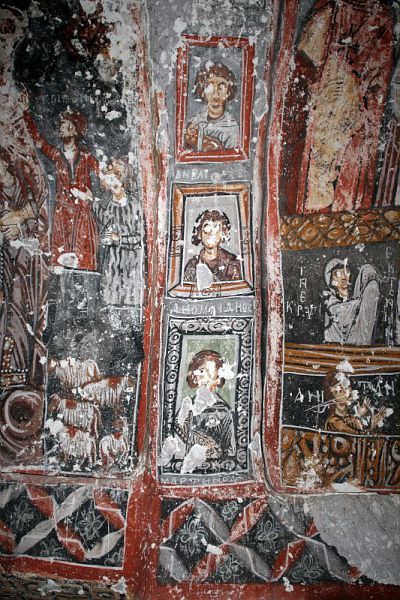
Church of St. Barbara with a fresco depicting three of the Seven Sleepers
Manoël Pénicaud / Le Pictorium
LePictorium_0169815.jpg
Known in Islam as the People of the Cave
(Ahl al-Kahf in Arabic), the Seven Sleepers are said to have miraculously slept for several centuries in a cave in order to escape from the persecutions of the Roman Empire. Their awakening is a metaphor for the resurrection
of the body, in both Christianity and in Islam
(Qur’anic sura ‘The Cave’). The narratives
of the Seven Sleepers were widely disseminated. Numerous caves in the Mediterranean region are considered to be sacred places where this miracle occurred. This legend has sometimes given rise to joint veneration by Christians and Muslims.
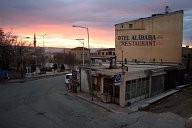
A Cappadocian village
Manoël Pénicaud / Le Pictorium
LePictorium_0169816.jpg
Known in Islam as the People of the Cave
(Ahl al-Kahf in Arabic), the Seven Sleepers are said to have miraculously slept for several centuries in a cave in order to escape from the persecutions of the Roman Empire. Their awakening is a metaphor for the resurrection
of the body, in both Christianity and in Islam
(Qur’anic sura ‘The Cave’). The narratives
of the Seven Sleepers were widely disseminated. Numerous caves in the Mediterranean region are considered to be sacred places where this miracle occurred. This legend has sometimes given rise to joint veneration by Christians and Muslims.
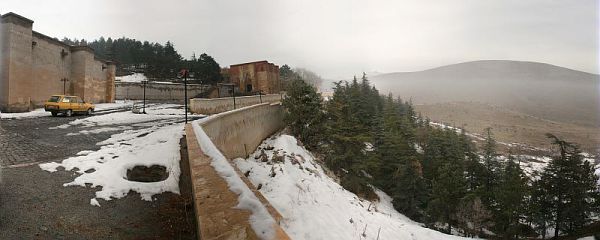
Old caravanserai of the Seven Sleepers in Afsin, on the border of Kurdistan in Turkey
Manoël Pénicaud / Le Pictorium
LePictorium_0169817.jpg
The site formerly cohabited with a church.
Known in Islam as the People of the Cave (Ahl al-Kahf in Arabic), the Seven Sleepers are said to have miraculously slept for several centuries in a cave in order to escape from the persecutions of the Roman Empire. Their awakening is a metaphor for the resurrection of the body, in both Christianity and in Islam (Qur’anic sura ‘The Cave’). The narratives of the Seven Sleepers were widely disseminated. Numerous caves in the Mediterranean region are considered to be sacred places where this miracle occurred. This legend has sometimes given rise to joint veneration by Christians and Muslims.
Known in Islam as the People of the Cave (Ahl al-Kahf in Arabic), the Seven Sleepers are said to have miraculously slept for several centuries in a cave in order to escape from the persecutions of the Roman Empire. Their awakening is a metaphor for the resurrection of the body, in both Christianity and in Islam (Qur’anic sura ‘The Cave’). The narratives of the Seven Sleepers were widely disseminated. Numerous caves in the Mediterranean region are considered to be sacred places where this miracle occurred. This legend has sometimes given rise to joint veneration by Christians and Muslims.

Fountain with the Turkish names of the Seven Sleepers in an old caravanserai on the Silk Road
Manoël Pénicaud / Le Pictorium
LePictorium_0169818.jpg
Known in Islam as the People of the Cave
(Ahl al-Kahf in Arabic), the Seven Sleepers are said to have miraculously slept for several centuries in a cave in order to escape from the persecutions of the Roman Empire. Their awakening is a metaphor for the resurrection
of the body, in both Christianity and in Islam
(Qur’anic sura ‘The Cave’). The narratives
of the Seven Sleepers were widely disseminated. Numerous caves in the Mediterranean region are considered to be sacred places where this miracle occurred. This legend has sometimes given rise to joint veneration by Christians and Muslims.
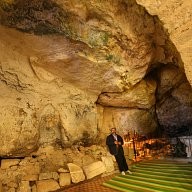
Cave of the Seven Sleepers in Afsin
Manoël Pénicaud / Le Pictorium
LePictorium_0169819.jpg
Known in Islam as the People of the Cave
(Ahl al-Kahf in Arabic), the Seven Sleepers are said to have miraculously slept for several centuries in a cave in order to escape from the persecutions of the Roman Empire. Their awakening is a metaphor for the resurrection
of the body, in both Christianity and in Islam
(Qur’anic sura ‘The Cave’). The narratives
of the Seven Sleepers were widely disseminated. Numerous caves in the Mediterranean region are considered to be sacred places where this miracle occurred. This legend has sometimes given rise to joint veneration by Christians and Muslims.

Bus station in winter
Manoël Pénicaud / Le Pictorium
LePictorium_0169820.jpg
Known in Islam as the People of the Cave
(Ahl al-Kahf in Arabic), the Seven Sleepers are said to have miraculously slept for several centuries in a cave in order to escape from the persecutions of the Roman Empire. Their awakening is a metaphor for the resurrection
of the body, in both Christianity and in Islam
(Qur’anic sura ‘The Cave’). The narratives
of the Seven Sleepers were widely disseminated. Numerous caves in the Mediterranean region are considered to be sacred places where this miracle occurred. This legend has sometimes given rise to joint veneration by Christians and Muslims.

Wishing Tree in Afsin
Manoël Pénicaud / Le Pictorium
LePictorium_0169821.jpg
Known in Islam as the People of the Cave
(Ahl al-Kahf in Arabic), the Seven Sleepers are said to have miraculously slept for several centuries in a cave in order to escape from the persecutions of the Roman Empire. Their awakening is a metaphor for the resurrection
of the body, in both Christianity and in Islam
(Qur’anic sura ‘The Cave’). The narratives
of the Seven Sleepers were widely disseminated. Numerous caves in the Mediterranean region are considered to be sacred places where this miracle occurred. This legend has sometimes given rise to joint veneration by Christians and Muslims.

the Seven Sleepers
Manoël Pénicaud / Le Pictorium
LePictorium_0169822.jpg
Known in Islam as the People of the Cave
(Ahl al-Kahf in Arabic), the Seven Sleepers are said to have miraculously slept for several centuries in a cave in order to escape from the persecutions of the Roman Empire. Their awakening is a metaphor for the resurrection
of the body, in both Christianity and in Islam
(Qur’anic sura ‘The Cave’). The narratives
of the Seven Sleepers were widely disseminated. Numerous caves in the Mediterranean region are considered to be sacred places where this miracle occurred. This legend has sometimes given rise to joint veneration by Christians and Muslims.

the Seven Sleepers
Manoël Pénicaud / Le Pictorium
LePictorium_0169823.jpg
Known in Islam as the People of the Cave
(Ahl al-Kahf in Arabic), the Seven Sleepers are said to have miraculously slept for several centuries in a cave in order to escape from the persecutions of the Roman Empire. Their awakening is a metaphor for the resurrection
of the body, in both Christianity and in Islam
(Qur’anic sura ‘The Cave’). The narratives
of the Seven Sleepers were widely disseminated. Numerous caves in the Mediterranean region are considered to be sacred places where this miracle occurred. This legend has sometimes given rise to joint veneration by Christians and Muslims.

the Seven Sleepers
Manoël Pénicaud / Le Pictorium
LePictorium_0169824.jpg
Known in Islam as the People of the Cave
(Ahl al-Kahf in Arabic), the Seven Sleepers are said to have miraculously slept for several centuries in a cave in order to escape from the persecutions of the Roman Empire. Their awakening is a metaphor for the resurrection
of the body, in both Christianity and in Islam
(Qur’anic sura ‘The Cave’). The narratives
of the Seven Sleepers were widely disseminated. Numerous caves in the Mediterranean region are considered to be sacred places where this miracle occurred. This legend has sometimes given rise to joint veneration by Christians and Muslims.

the Seven Sleepers
Manoël Pénicaud / Le Pictorium
LePictorium_0169825.jpg
Known in Islam as the People of the Cave
(Ahl al-Kahf in Arabic), the Seven Sleepers are said to have miraculously slept for several centuries in a cave in order to escape from the persecutions of the Roman Empire. Their awakening is a metaphor for the resurrection
of the body, in both Christianity and in Islam
(Qur’anic sura ‘The Cave’). The narratives
of the Seven Sleepers were widely disseminated. Numerous caves in the Mediterranean region are considered to be sacred places where this miracle occurred. This legend has sometimes given rise to joint veneration by Christians and Muslims.
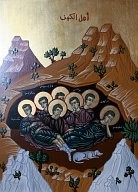
the Seven Sleepers
Manoël Pénicaud / Le Pictorium
LePictorium_0169826.jpg
Known in Islam as the People of the Cave
(Ahl al-Kahf in Arabic), the Seven Sleepers are said to have miraculously slept for several centuries in a cave in order to escape from the persecutions of the Roman Empire. Their awakening is a metaphor for the resurrection
of the body, in both Christianity and in Islam
(Qur’anic sura ‘The Cave’). The narratives
of the Seven Sleepers were widely disseminated. Numerous caves in the Mediterranean region are considered to be sacred places where this miracle occurred. This legend has sometimes given rise to joint veneration by Christians and Muslims.
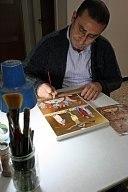
the Seven Sleepers
Manoël Pénicaud / Le Pictorium
LePictorium_0169827.jpg
Known in Islam as the People of the Cave
(Ahl al-Kahf in Arabic), the Seven Sleepers are said to have miraculously slept for several centuries in a cave in order to escape from the persecutions of the Roman Empire. Their awakening is a metaphor for the resurrection
of the body, in both Christianity and in Islam
(Qur’anic sura ‘The Cave’). The narratives
of the Seven Sleepers were widely disseminated. Numerous caves in the Mediterranean region are considered to be sacred places where this miracle occurred. This legend has sometimes given rise to joint veneration by Christians and Muslims.

the Seven Sleepers
Manoël Pénicaud / Le Pictorium
LePictorium_0169828.jpg
Known in Islam as the People of the Cave
(Ahl al-Kahf in Arabic), the Seven Sleepers are said to have miraculously slept for several centuries in a cave in order to escape from the persecutions of the Roman Empire. Their awakening is a metaphor for the resurrection
of the body, in both Christianity and in Islam
(Qur’anic sura ‘The Cave’). The narratives
of the Seven Sleepers were widely disseminated. Numerous caves in the Mediterranean region are considered to be sacred places where this miracle occurred. This legend has sometimes given rise to joint veneration by Christians and Muslims.
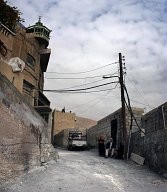
the Seven Sleepers
Manoël Pénicaud / Le Pictorium
LePictorium_0169829.jpg
Known in Islam as the People of the Cave
(Ahl al-Kahf in Arabic), the Seven Sleepers are said to have miraculously slept for several centuries in a cave in order to escape from the persecutions of the Roman Empire. Their awakening is a metaphor for the resurrection
of the body, in both Christianity and in Islam
(Qur’anic sura ‘The Cave’). The narratives
of the Seven Sleepers were widely disseminated. Numerous caves in the Mediterranean region are considered to be sacred places where this miracle occurred. This legend has sometimes given rise to joint veneration by Christians and Muslims.
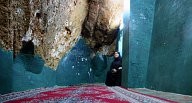
the Seven Sleepers
Manoël Pénicaud / Le Pictorium
LePictorium_0169830.jpg
Known in Islam as the People of the Cave
(Ahl al-Kahf in Arabic), the Seven Sleepers are said to have miraculously slept for several centuries in a cave in order to escape from the persecutions of the Roman Empire. Their awakening is a metaphor for the resurrection
of the body, in both Christianity and in Islam
(Qur’anic sura ‘The Cave’). The narratives
of the Seven Sleepers were widely disseminated. Numerous caves in the Mediterranean region are considered to be sacred places where this miracle occurred. This legend has sometimes given rise to joint veneration by Christians and Muslims.

the Seven Sleepers
Manoël Pénicaud / Le Pictorium
LePictorium_0169831.jpg
Known in Islam as the People of the Cave
(Ahl al-Kahf in Arabic), the Seven Sleepers are said to have miraculously slept for several centuries in a cave in order to escape from the persecutions of the Roman Empire. Their awakening is a metaphor for the resurrection
of the body, in both Christianity and in Islam
(Qur’anic sura ‘The Cave’). The narratives
of the Seven Sleepers were widely disseminated. Numerous caves in the Mediterranean region are considered to be sacred places where this miracle occurred. This legend has sometimes given rise to joint veneration by Christians and Muslims.

the Seven Sleepers
Manoël Pénicaud / Le Pictorium
LePictorium_0169832.jpg
Known in Islam as the People of the Cave
(Ahl al-Kahf in Arabic), the Seven Sleepers are said to have miraculously slept for several centuries in a cave in order to escape from the persecutions of the Roman Empire. Their awakening is a metaphor for the resurrection
of the body, in both Christianity and in Islam
(Qur’anic sura ‘The Cave’). The narratives
of the Seven Sleepers were widely disseminated. Numerous caves in the Mediterranean region are considered to be sacred places where this miracle occurred. This legend has sometimes given rise to joint veneration by Christians and Muslims.

the Seven Sleepers
Manoël Pénicaud / Le Pictorium
LePictorium_0169833.jpg
Known in Islam as the People of the Cave
(Ahl al-Kahf in Arabic), the Seven Sleepers are said to have miraculously slept for several centuries in a cave in order to escape from the persecutions of the Roman Empire. Their awakening is a metaphor for the resurrection
of the body, in both Christianity and in Islam
(Qur’anic sura ‘The Cave’). The narratives
of the Seven Sleepers were widely disseminated. Numerous caves in the Mediterranean region are considered to be sacred places where this miracle occurred. This legend has sometimes given rise to joint veneration by Christians and Muslims.

the Seven Sleepers
Manoël Pénicaud / Le Pictorium
LePictorium_0169834.jpg
Known in Islam as the People of the Cave
(Ahl al-Kahf in Arabic), the Seven Sleepers are said to have miraculously slept for several centuries in a cave in order to escape from the persecutions of the Roman Empire. Their awakening is a metaphor for the resurrection
of the body, in both Christianity and in Islam
(Qur’anic sura ‘The Cave’). The narratives
of the Seven Sleepers were widely disseminated. Numerous caves in the Mediterranean region are considered to be sacred places where this miracle occurred. This legend has sometimes given rise to joint veneration by Christians and Muslims.

the Seven Sleepers
Manoël Pénicaud / Le Pictorium
LePictorium_0169835.jpg
Known in Islam as the People of the Cave
(Ahl al-Kahf in Arabic), the Seven Sleepers are said to have miraculously slept for several centuries in a cave in order to escape from the persecutions of the Roman Empire. Their awakening is a metaphor for the resurrection
of the body, in both Christianity and in Islam
(Qur’anic sura ‘The Cave’). The narratives
of the Seven Sleepers were widely disseminated. Numerous caves in the Mediterranean region are considered to be sacred places where this miracle occurred. This legend has sometimes given rise to joint veneration by Christians and Muslims.
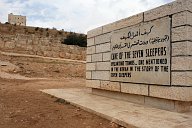
the Seven Sleepers
Manoël Pénicaud / Le Pictorium
LePictorium_0169836.jpg
Known in Islam as the People of the Cave
(Ahl al-Kahf in Arabic), the Seven Sleepers are said to have miraculously slept for several centuries in a cave in order to escape from the persecutions of the Roman Empire. Their awakening is a metaphor for the resurrection
of the body, in both Christianity and in Islam
(Qur’anic sura ‘The Cave’). The narratives
of the Seven Sleepers were widely disseminated. Numerous caves in the Mediterranean region are considered to be sacred places where this miracle occurred. This legend has sometimes given rise to joint veneration by Christians and Muslims.

the Seven Sleepers
Manoël Pénicaud / Le Pictorium
LePictorium_0169837.jpg
Known in Islam as the People of the Cave
(Ahl al-Kahf in Arabic), the Seven Sleepers are said to have miraculously slept for several centuries in a cave in order to escape from the persecutions of the Roman Empire. Their awakening is a metaphor for the resurrection
of the body, in both Christianity and in Islam
(Qur’anic sura ‘The Cave’). The narratives
of the Seven Sleepers were widely disseminated. Numerous caves in the Mediterranean region are considered to be sacred places where this miracle occurred. This legend has sometimes given rise to joint veneration by Christians and Muslims.
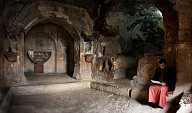
the Seven Sleepers
Manoël Pénicaud / Le Pictorium
LePictorium_0169838.jpg
Known in Islam as the People of the Cave
(Ahl al-Kahf in Arabic), the Seven Sleepers are said to have miraculously slept for several centuries in a cave in order to escape from the persecutions of the Roman Empire. Their awakening is a metaphor for the resurrection
of the body, in both Christianity and in Islam
(Qur’anic sura ‘The Cave’). The narratives
of the Seven Sleepers were widely disseminated. Numerous caves in the Mediterranean region are considered to be sacred places where this miracle occurred. This legend has sometimes given rise to joint veneration by Christians and Muslims.

the Seven Sleepers
Manoël Pénicaud / Le Pictorium
LePictorium_0169839.jpg
Known in Islam as the People of the Cave
(Ahl al-Kahf in Arabic), the Seven Sleepers are said to have miraculously slept for several centuries in a cave in order to escape from the persecutions of the Roman Empire. Their awakening is a metaphor for the resurrection
of the body, in both Christianity and in Islam
(Qur’anic sura ‘The Cave’). The narratives
of the Seven Sleepers were widely disseminated. Numerous caves in the Mediterranean region are considered to be sacred places where this miracle occurred. This legend has sometimes given rise to joint veneration by Christians and Muslims.

the Seven Sleepers
Manoël Pénicaud / Le Pictorium
LePictorium_0169840.jpg
Known in Islam as the People of the Cave
(Ahl al-Kahf in Arabic), the Seven Sleepers are said to have miraculously slept for several centuries in a cave in order to escape from the persecutions of the Roman Empire. Their awakening is a metaphor for the resurrection
of the body, in both Christianity and in Islam
(Qur’anic sura ‘The Cave’). The narratives
of the Seven Sleepers were widely disseminated. Numerous caves in the Mediterranean region are considered to be sacred places where this miracle occurred. This legend has sometimes given rise to joint veneration by Christians and Muslims.

the Seven Sleepers
Manoël Pénicaud / Le Pictorium
LePictorium_0169841.jpg
Known in Islam as the People of the Cave
(Ahl al-Kahf in Arabic), the Seven Sleepers are said to have miraculously slept for several centuries in a cave in order to escape from the persecutions of the Roman Empire. Their awakening is a metaphor for the resurrection
of the body, in both Christianity and in Islam
(Qur’anic sura ‘The Cave’). The narratives
of the Seven Sleepers were widely disseminated. Numerous caves in the Mediterranean region are considered to be sacred places where this miracle occurred. This legend has sometimes given rise to joint veneration by Christians and Muslims.

the Seven Sleepers
Manoël Pénicaud / Le Pictorium
LePictorium_0169842.jpg
Known in Islam as the People of the Cave
(Ahl al-Kahf in Arabic), the Seven Sleepers are said to have miraculously slept for several centuries in a cave in order to escape from the persecutions of the Roman Empire. Their awakening is a metaphor for the resurrection
of the body, in both Christianity and in Islam
(Qur’anic sura ‘The Cave’). The narratives
of the Seven Sleepers were widely disseminated. Numerous caves in the Mediterranean region are considered to be sacred places where this miracle occurred. This legend has sometimes given rise to joint veneration by Christians and Muslims.

the Seven Sleepers
Manoël Pénicaud / Le Pictorium
LePictorium_0169843.jpg
Known in Islam as the People of the Cave
(Ahl al-Kahf in Arabic), the Seven Sleepers are said to have miraculously slept for several centuries in a cave in order to escape from the persecutions of the Roman Empire. Their awakening is a metaphor for the resurrection
of the body, in both Christianity and in Islam
(Qur’anic sura ‘The Cave’). The narratives
of the Seven Sleepers were widely disseminated. Numerous caves in the Mediterranean region are considered to be sacred places where this miracle occurred. This legend has sometimes given rise to joint veneration by Christians and Muslims.

the Seven Sleepers
Manoël Pénicaud / Le Pictorium
LePictorium_0169844.jpg
Known in Islam as the People of the Cave
(Ahl al-Kahf in Arabic), the Seven Sleepers are said to have miraculously slept for several centuries in a cave in order to escape from the persecutions of the Roman Empire. Their awakening is a metaphor for the resurrection
of the body, in both Christianity and in Islam
(Qur’anic sura ‘The Cave’). The narratives
of the Seven Sleepers were widely disseminated. Numerous caves in the Mediterranean region are considered to be sacred places where this miracle occurred. This legend has sometimes given rise to joint veneration by Christians and Muslims.
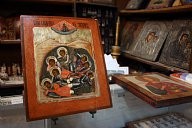
the Seven Sleepers
Manoël Pénicaud / Le Pictorium
LePictorium_0169845.jpg
Known in Islam as the People of the Cave
(Ahl al-Kahf in Arabic), the Seven Sleepers are said to have miraculously slept for several centuries in a cave in order to escape from the persecutions of the Roman Empire. Their awakening is a metaphor for the resurrection
of the body, in both Christianity and in Islam
(Qur’anic sura ‘The Cave’). The narratives
of the Seven Sleepers were widely disseminated. Numerous caves in the Mediterranean region are considered to be sacred places where this miracle occurred. This legend has sometimes given rise to joint veneration by Christians and Muslims.

the Seven Sleepers
Manoël Pénicaud / Le Pictorium
LePictorium_0169846.jpg
Known in Islam as the People of the Cave
(Ahl al-Kahf in Arabic), the Seven Sleepers are said to have miraculously slept for several centuries in a cave in order to escape from the persecutions of the Roman Empire. Their awakening is a metaphor for the resurrection
of the body, in both Christianity and in Islam
(Qur’anic sura ‘The Cave’). The narratives
of the Seven Sleepers were widely disseminated. Numerous caves in the Mediterranean region are considered to be sacred places where this miracle occurred. This legend has sometimes given rise to joint veneration by Christians and Muslims.
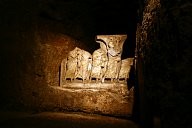
the Seven Sleepers
Manoël Pénicaud / Le Pictorium
LePictorium_0169847.jpg
Known in Islam as the People of the Cave
(Ahl al-Kahf in Arabic), the Seven Sleepers are said to have miraculously slept for several centuries in a cave in order to escape from the persecutions of the Roman Empire. Their awakening is a metaphor for the resurrection
of the body, in both Christianity and in Islam
(Qur’anic sura ‘The Cave’). The narratives
of the Seven Sleepers were widely disseminated. Numerous caves in the Mediterranean region are considered to be sacred places where this miracle occurred. This legend has sometimes given rise to joint veneration by Christians and Muslims.

the Seven Sleepers
Manoël Pénicaud / Le Pictorium
LePictorium_0169848.jpg
Known in Islam as the People of the Cave
(Ahl al-Kahf in Arabic), the Seven Sleepers are said to have miraculously slept for several centuries in a cave in order to escape from the persecutions of the Roman Empire. Their awakening is a metaphor for the resurrection
of the body, in both Christianity and in Islam
(Qur’anic sura ‘The Cave’). The narratives
of the Seven Sleepers were widely disseminated. Numerous caves in the Mediterranean region are considered to be sacred places where this miracle occurred. This legend has sometimes given rise to joint veneration by Christians and Muslims.

the Seven Sleepers
Manoël Pénicaud / Le Pictorium
LePictorium_0169849.jpg
Known in Islam as the People of the Cave
(Ahl al-Kahf in Arabic), the Seven Sleepers are said to have miraculously slept for several centuries in a cave in order to escape from the persecutions of the Roman Empire. Their awakening is a metaphor for the resurrection
of the body, in both Christianity and in Islam
(Qur’anic sura ‘The Cave’). The narratives
of the Seven Sleepers were widely disseminated. Numerous caves in the Mediterranean region are considered to be sacred places where this miracle occurred. This legend has sometimes given rise to joint veneration by Christians and Muslims.
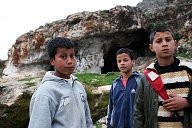
the Seven Sleepers
Manoël Pénicaud / Le Pictorium
LePictorium_0169850.jpg
Known in Islam as the People of the Cave
(Ahl al-Kahf in Arabic), the Seven Sleepers are said to have miraculously slept for several centuries in a cave in order to escape from the persecutions of the Roman Empire. Their awakening is a metaphor for the resurrection
of the body, in both Christianity and in Islam
(Qur’anic sura ‘The Cave’). The narratives
of the Seven Sleepers were widely disseminated. Numerous caves in the Mediterranean region are considered to be sacred places where this miracle occurred. This legend has sometimes given rise to joint veneration by Christians and Muslims.
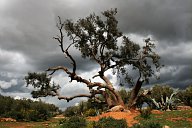
the Seven Sleepers
Manoël Pénicaud / Le Pictorium
LePictorium_0169851.jpg
Known in Islam as the People of the Cave
(Ahl al-Kahf in Arabic), the Seven Sleepers are said to have miraculously slept for several centuries in a cave in order to escape from the persecutions of the Roman Empire. Their awakening is a metaphor for the resurrection
of the body, in both Christianity and in Islam
(Qur’anic sura ‘The Cave’). The narratives
of the Seven Sleepers were widely disseminated. Numerous caves in the Mediterranean region are considered to be sacred places where this miracle occurred. This legend has sometimes given rise to joint veneration by Christians and Muslims.
Next page
